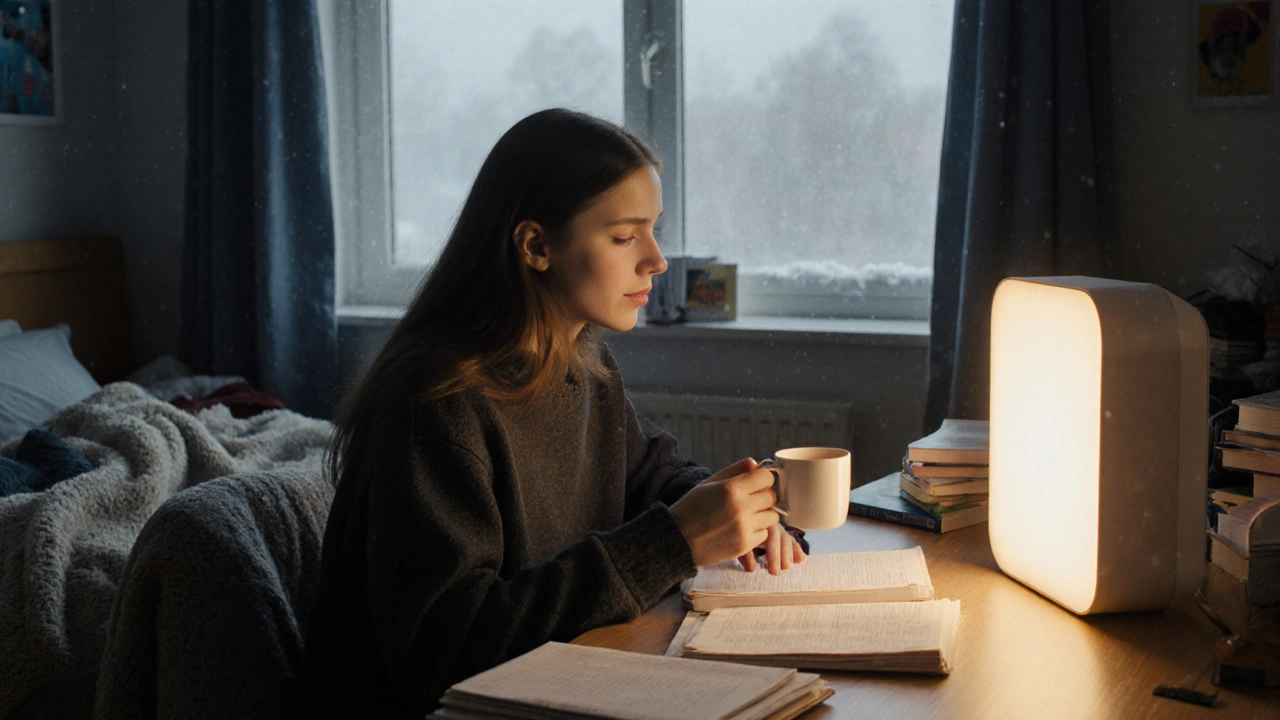Light Therapy for UK Students: Boost Mood, Sleep, and Focus During Dark Months
When you're stuck in a cold, grey UK winter with short days and long nights, it's not just the weather that feels heavy—it's your energy, focus, and mood. That’s where light therapy, a non-drug treatment that uses artificial light to reset your body’s internal clock and boost serotonin levels. Also known as phototherapy, it’s one of the most proven, low-cost ways students in Scotland, Wales, and northern England fight seasonal mood drops. Unlike caffeine or late-night studying, light therapy targets the root cause: lack of natural sunlight disrupting your circadian rhythm, your body’s 24-hour cycle that controls sleep, hormone release, and alertness. When your rhythm gets thrown off, you feel tired in the morning, sluggish after lunch, and wired at night—even if you’re getting enough hours in bed.
For UK students, this isn’t just about feeling a bit down. It’s about staying on top of deadlines, showing up to lectures, and keeping your grades from slipping. Research from the University of Edinburgh shows that over 60% of students in northern UK campuses report significant mood changes between October and March. Light therapy isn’t magic—it’s science. A 30-minute session with a 10,000-lux light box in the morning can improve symptoms of seasonal depression, a type of depression that follows seasonal patterns, often starting in late fall and easing in spring. It’s not just for people diagnosed with SAD. If you’ve ever felt like your brain is wrapped in wool during winter, or if you’ve skipped meals because you just didn’t feel hungry, or if you’ve canceled plans because you couldn’t get out of bed—light therapy might be the simplest fix you haven’t tried.
What you need isn’t expensive. You don’t need a full-spectrum lamp from a luxury brand. A basic, clinically approved light box that emits 10,000 lux and filters out UV rays will do. Use it while you eat breakfast, scroll through Instagram, or read your lecture notes. Keep it within arm’s reach, eyes open but not staring directly at the light. Timing matters: morning use works best. Too late in the day, and it can mess with your sleep instead of helping it. And while it’s not a replacement for therapy or medication if you’re struggling seriously, it’s a powerful first step—especially when you’re on a student budget.
What you’ll find in the posts below isn’t just theory. You’ll get real, student-tested advice on how to pick a light therapy device without getting ripped off, how to use it when you’re sharing a tiny flat with three flatmates, and how to combine it with other habits—like morning walks or screen-time limits—to make winter feel manageable again. You’ll also see how it connects to other student health topics we cover: sleep deprivation, stress management, nutrition for mood, and even mindful commuting. This isn’t a quick fix. It’s a daily habit that, over time, gives you back control over your energy, your focus, and your mental space.
Managing Seasonal Affective Disorder at UK Universities: Light and Routine
Published on Oct 22
0 Comments
Learn how light therapy and daily routine can help UK university students manage seasonal affective disorder. Practical, science-backed strategies for fighting winter depression on campus.
